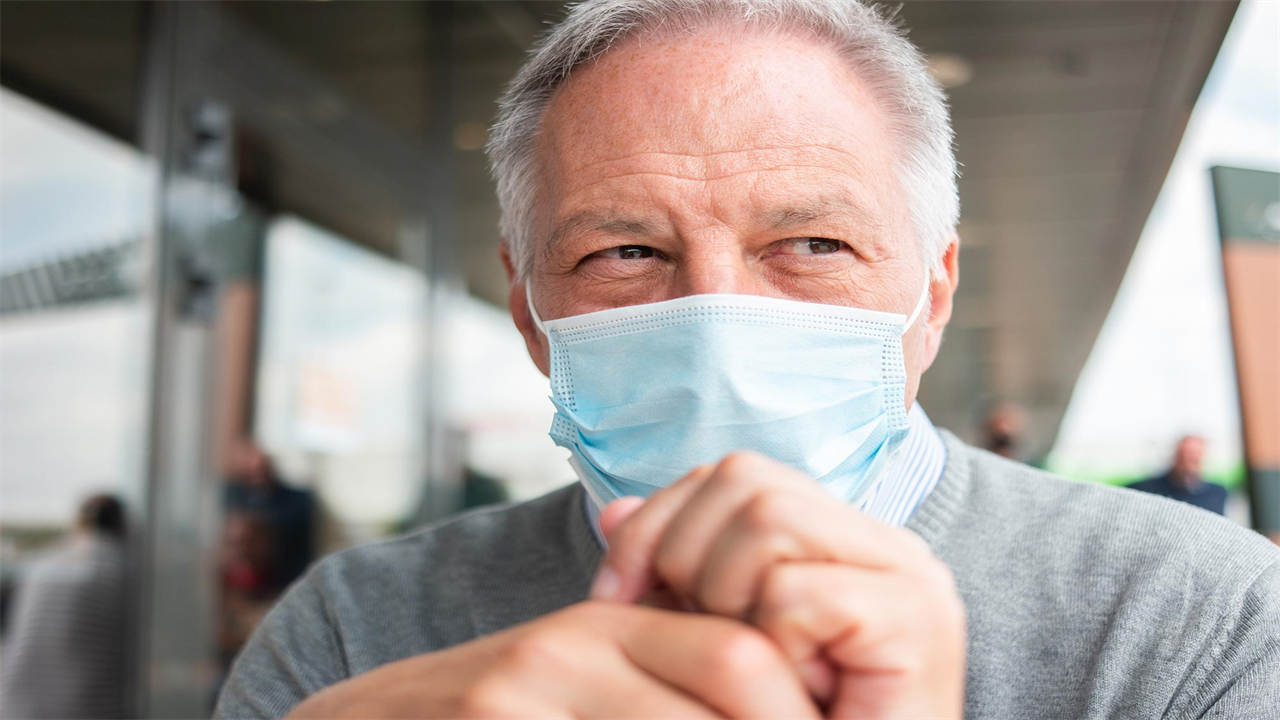New Research Shows Face Masks Effectively Limit COVID-19 Transmission
0 View
Share this Video
- Publish Date:
- 22 May, 2021
- Category:
- Covid
- Video License
- Standard License
- Imported From:
- Youtube
Tags

Does the mask fit properly? In most environments, the virus concentration in the air is so low that even simple surgical masks are very effective in controlling the spread of COVID-19. Provided the mask is worn correctly. “
New research shows how face masks reduce the effective reproduction rate of COVID-19 and why their efficacy varies between different environments under virus-restricted and virus-rich conditions.
‘Don’t forget the mask’ – although most people today heed this advice, professionals give different opinions about the effectiveness of face masks. An international team led by researchers from the Max Planck Institute for Chemistry in Mainz, Germany, has now used observational data and model calculations to answer open questions. The research shows under what circumstances and in what way masks actually reduce the individual and population mean risk of contamination with COVID-19 and help reduce the corona pandemic. In most environments and situations, even simple surgical masks effectively reduce the transmission of SARS-CoV-2 and the effective reproduction number for COVID-19. In environments with potentially high viral concentrations in the air, such as medical institutions and dense indoor areas, masks with a higher filter efficiency (N95 / FFP2) should be used and combined with other protective measures, such as intensive ventilation.
Face masks are among the simplest, most convenient and effective measures against the transmission of infectious respiratory diseases through the air, but their usefulness against COVID-19 is still under debate. Previous studies showed that masks were apparently ineffective under certain circumstances. Others found high efficiency, but no conclusive explanation for the apparent contradictions and inconsistencies was given.
Researchers from the Max Planck Institute for Chemistry (MPIC), the Medical Center of the Johannes Gutenberg University Mainz and the Charité – Universitätsmedizin Berlin, together with partners from China and the US, used observational data and a new quantitative model of airborne virus exposure to how the efficacy of face masks depends on characteristic regimes of airborne virus concentration.
In most situations, even simple surgical masks are effective
“For the transfer of SARS-CoV-2 via air, we find that usually only a small fraction of the exhaled respiratory particles contain viruses. Most environments and contacts are under virus-restricted conditions, where face masks, including simple surgical masks, are highly effective in preventing the spread of COVID-19, ”explains Yafang Cheng, head of a Minerva Research Group at MPIC. “Our study provides a detailed and novel mechanistic understanding of the population mean efficacy of masks, explaining why regions with a higher percentage of the population wearing masks have better control over the pandemic.”
However, in virus-rich indoor environments with a high risk of infection, more advanced masks (N95 / FFP2) and other protective equipment are required to prevent airborne transmission. The strong dependence of the mask’s efficacy on the virus concentration in the air emphasizes the importance of combining masks with other protective measures such as ventilation and distance to minimize the risk of infection.
“The combination of highly efficient masks with other protective measures is especially important for hospitals, medical centers and other indoor environments, where high-risk patients may encounter high levels of virus,” said Christian Witt, head of the Pneumology Research Area at Charité. – Universitätsmedizin Berlin. “Masks will remain an important measure of protection against SARS-Cov-2 infection – even for vaccinated individuals, especially when the protection afforded by vaccination diminishes over time.”
The approach can be used to assess protection against more infectious mutants
“Our approach and results of relating the effectiveness of protective measures to the chance of infection and the baseline reproduction rate apply to a wide variety of respiratory viruses and diseases, including coronaviruses, rhinoviruses and influenza. They can also be used to assess the efficacy of masks and other preventive measures against new and more contagious mutants of SARS-CoV-2. “said Hang Su, research group leader at the MPIC.” Our research also shows that aerosol transmission does not necessarily lead to very high reproduction rates as seen in measles, and that relatively low reproduction rates do not preclude airborne transmission. “
In addition, the study shows the importance of high compliance and correct use of masks to ensure that they are effective in reducing the COVID-19 reproduction rate. To reduce the reproduction number from ~ 3 as originally observed to below 1, a compliance of at least 60-70% would be required for surgical masks (~ 40% for N95 / FFP2 masks). More infectious variants of SARS-CoV-2 would require a higher level of adherence, further emphasizing the need to combine masks with other protective measures such as ventilation and distance to efficiently reduce infection rates and reproductive rates.
“Our study quantitatively explains why and how face masks are highly effective in low virus and less effective virus-rich environments – both at the individual and population mean level, related to the observed infection rates and effective reproductive rates. This has not been achieved before and is essential to overcome unclear previous results, arguments and discussions. We are confident that the mechanistic insights and quantitative results obtained in our study are a scientific breakthrough that will help settle the ongoing debate about the usefulness of masks and promote efficient mitigation of the COVID pandemic, ”concludes Ulrich Pöschl, director of the MPIC together. Multi-stage chemistry department.
Reference: “Face masks effectively reduce the risk of SARS-CoV-2 transmission” by Yafang Cheng, Nan Ma, Christian Witt, Steffen Rapp, Philipp S. Wild, Meinrat O. Andreae, Ulrich Pöschl and Hang Su, May 20, 2021, Science.
DOI: 10.1126 / science.abg6296










